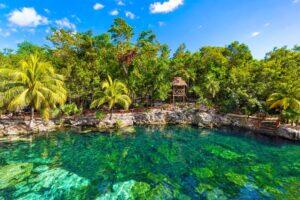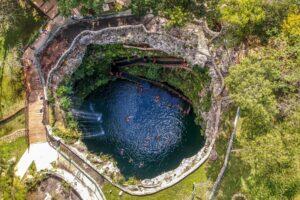Fodor's Expert Review Ruinas el Rey
Large signs on the Zona Hotelera's lagoon side, roughly opposite Playa Delfines, point out the so-called Ruins of the King, though the noble who held court here may or may not have been a king. Although much smaller than famous archaeological sites like Tulum and Chichén Itzá, this site, commonly called El Rey, is worth a visit and makes for an interesting juxtaposition of Mexico's past and present. First entered into Western chronicles in a 16th-century travelogue, the ruins weren't explored by archaeologists until 1910, and excavations didn't begin until 1954. In 1975, archaeologists began restoration work on the 47 structures with the help of the Mexican government.
Dating to the 3rd to 2nd century BC, El Rey is notable for having two main plazas bounded by two streets. (Most other Maya cities contain only one plaza.) Originally named Kin Ich Ahau Bonil, Mayan for "king of the solar countenance," the site was linked to astronomical practices. The pyramid is topped by a platform,... READ MORE
Large signs on the Zona Hotelera's lagoon side, roughly opposite Playa Delfines, point out the so-called Ruins of the King, though the noble who held court here may or may not have been a king. Although much smaller than famous archaeological sites like Tulum and Chichén Itzá, this site, commonly called El Rey, is worth a visit and makes for an interesting juxtaposition of Mexico's past and present. First entered into Western chronicles in a 16th-century travelogue, the ruins weren't explored by archaeologists until 1910, and excavations didn't begin until 1954. In 1975, archaeologists began restoration work on the 47 structures with the help of the Mexican government.
Dating to the 3rd to 2nd century BC, El Rey is notable for having two main plazas bounded by two streets. (Most other Maya cities contain only one plaza.) Originally named Kin Ich Ahau Bonil, Mayan for "king of the solar countenance," the site was linked to astronomical practices. The pyramid is topped by a platform, and inside its vault are paintings on stucco. Skeletons interred at the apex and at the base indicate the site may have been a royal burial ground. In 2006, workmen unearthed an ancient Maya skeleton on the outskirts of the park.
READ LESS








